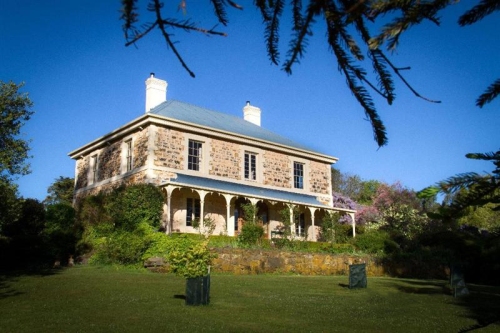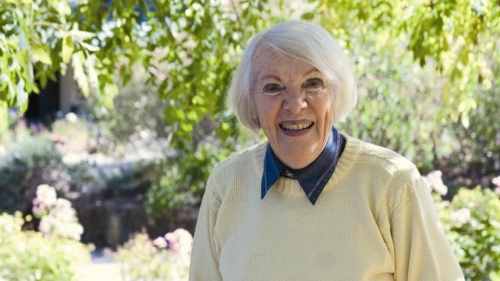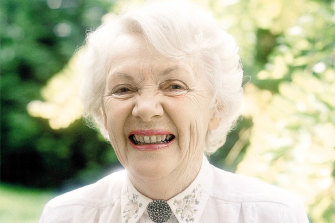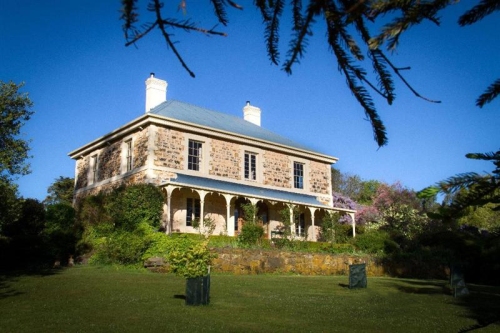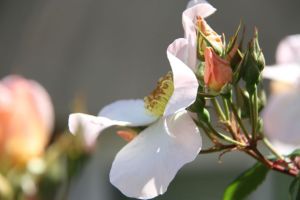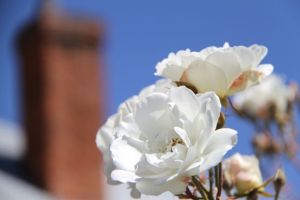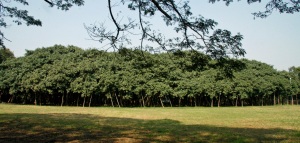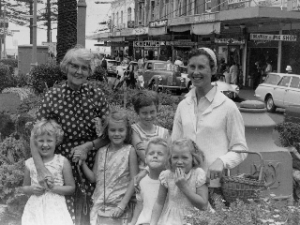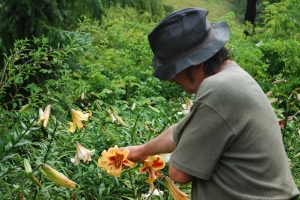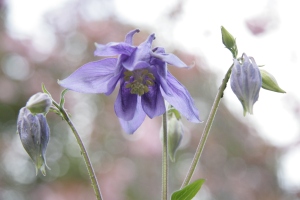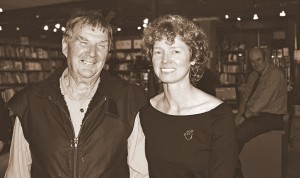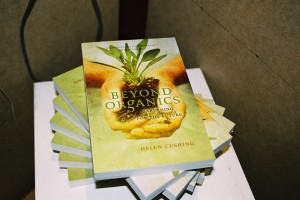Have you ever wondered about the effectiveness of carbon emissions offset schemes? I admit to scepticism each time I’m confronted with the $2 tick box to save the world when I fly. My preferred option is being a member of Greenfleet, an Australian not-for-profit charity with tax deductible status. According to founder Henry O’Clery, Greenfleet, which started in 1997, seems to have been the first biological emissions offset project in the world. Its humble origins are in a small bequest from a caring individual to start an organisation that helps the environment.
Plant 17 trees per car
Based on advice that the cheapest way to offset vehicle emissions was to plant trees, some basic sums (checked by CSIRO) produced the formula that the carbon produced annually by the average car can be offset by 17 trees. The idea was not only to offset emissions but to restore ecosystems and involve local communities in plantings. Australian motor racing legend Peter Brock was recruited as a patron, enabling a media-attention-grabbing launch – Brock driving a Commodore onstage with Jeff Kennett in the passenger seat.
After some wobbly years with L plates on, at 21 years old in 2019 Greenfleet is well and truly grown up and has a steady hand on the wheel. Their claim to be “Australia and New Zealand’s most respected source of biodiverse carbon offsets” is justified by their record on (or in) the ground: nine million native trees and shrubs planted in 475 biodiverse forests, totalling 8,524 ha.
Big companies and individuals offsetting with Greenfleet
Greenfleet is funded by thousands of individuals, leading brands, councils, universities and NGOs. Signed-up high profile brands include Smartgroup, Telstra, Bendigo Bank, Europcar, Carlton and United Breweries, Walt Disney Company (Australia) and Kings Transport. Universities include Monash, South Australia and La Trobe.
Individuals include me! Every year I use Greenfleet’s simple online calculator to estimate my carbon footprint based on vehicle type, flights and household gas/electricity. For example, I drive a small car so I pay $57 – basically $1/week – to offset its emissions. For a short domestic flight I pay $12, more for a long one. And so on. This year Greenfleet have introduce a new option called Carbon Cover 365. You pay $1/day to offset your carbon footprint. The tax deduction is a bonus and Greenfleet does the rest, engaging with local communities to restore degraded ecosystems. This not only offsets carbon emissions, it provides all-important wildlife habitat, erosion and salinity control, improved water quality in catchments, biodiversity enhancement and creates places of beauty to be enjoyed.
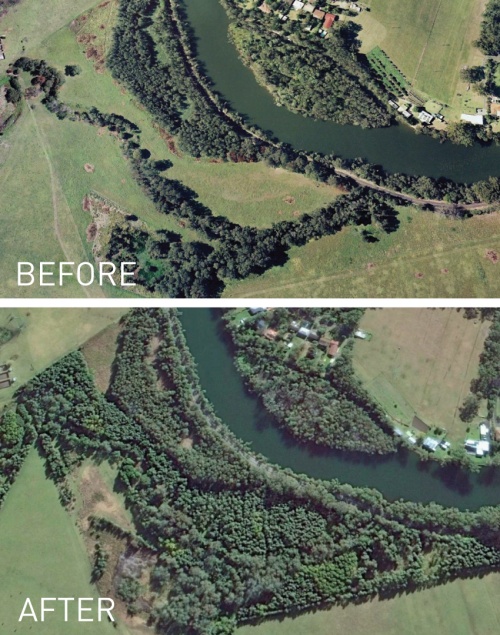
Pioneer Dairy, Wyong, NSW
Greenfleet’s impressive before and after images are convincing, but I decided to visit a site to see the results for myself. An easy day trip from Sydney, I took the train to Wyong on the NSW central coast where a 2007 planting had restored the riparian zone near the junction of Pioneer and Tuggerah Creeks. The planting is on Central Coast Wetlands – Pioneer Dairy, a former dairy farm which community activism saved from becoming a coal mine and power plant. Heavily impacted by cattle until the 1990s, the creek was rehabilitated with 10,000 trees and understorey species, offsetting carbon emissions from the Wyong Council’s vehicle fleet.
I was shown around by Jed, an enthusiastic young ecologist and volunteer on the Pioneer Dairy management board. Growing up in the region, Jed remembers helping with the tree planting as a school kid. With moist, deep soil and a warm, humid climate, the planting is already a forest buzzing with biodiversity – I presume the abundant mosquitos provide reliable tasty dinners for microbats, frogs and other creatures hungry for an invertebrate feast!
Swamp Mahogany (Eucalyptus robusta), just coming into maturity, flower in late winter providing an important food source for migratory birds, potentially including the rare swift parrot which has been seen in the Tuggerah Lakes Reserve. Sydney Blue Gum, (E. saligna) is a food source for squirrel gliders who make an incision in the bark then feed on the sap. Prickly Leaf Paperbark (Melaleuca styphelioides) and the Wyong Paperbark (M. biconvexa) are major species in the swamp sclerophyll forest, with the latter being a threatened species growing mainly along Tuggerah Creek. Nest boxes encourage arboreal mammals to make homes in the absence of mature trees with hollows. The Pioneer Dairy wetlands, forest and paddocks are a vital haven for many rare and threatened bird species. Although the Greenfleet planting here is relatively small, it plays an essential role in supporting this valuable ecological niche.
Ambitious projects
The majority of Greenfleet’s sites are in Victoria and NSW, with a smattering in Western Australia, Queensland and New Zealand. Most sites are 20-60 hectares and range from privately owned properties to rehabilitation of council-owned sites such as the 20-ha former Kelso Park Waste Disposal Centre (aka the Panania Tip) in western Sydney. The Upper Stony Creek Transformation Project is an ambitious plan to restore 1.5km of concrete-lined creek in western Melbourne to its natural state. An example of a private project is 60 ha in Taralga, north of Goulburn, where a pine plantation burned down. Anyone can apply to Greenfleet for support in revegetating a degraded landscape.
The value of small-scale revegetation projects should not be underestimated. Every patch of plants interacts with the wider environment in many ways. By planting a mixture of species from the original plant community, Greenfleet’s patch regeneration projects contribute essential ‘ecosystem services’ to areas that have become barren.
Travelling Birds
Travelling birds help us understand this value. 80 percent of Australia’s 73 species of honeyeaters are nomadic. They follow the nectar flows of our native plants as they bloom across the seasons. Treeless zones are a huge risk to travelling birds, while every patch of native vegetation is a life saver. Birds are a key biodiversity indicator – that is, the more birds, the healthier the ecology. Thus, when the Swamp Mahogany planted at Pioneer Dairy flower in late winter, the swift parrots who have bred in Tasmania and flown north for winter, will find a feast awaits. The tiny swift parrot is the fastest parrot in the world and there are fewer than 1,000 breeding pairs left. By offsetting your carbon emissions with Greenfleet, you can help save many such innocent, vulnerable lives and help restore our planet Earth to good health.
More info: www.greenfleet.com.au
P

